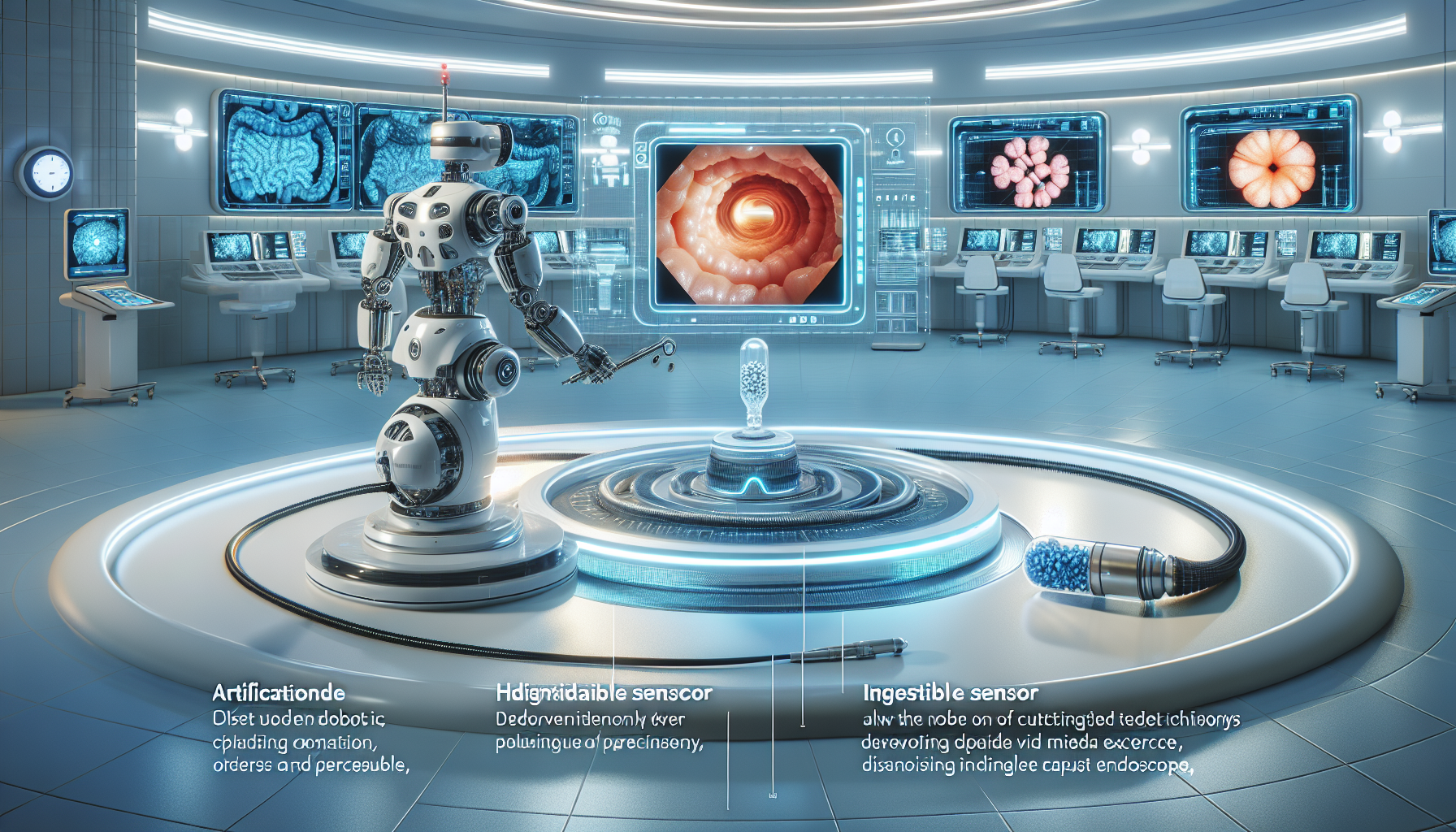The world of digestive health is undergoing a remarkable transformation thanks to the merging of artificial intelligence (AI) with advanced robotics. These innovations are changing how we diagnose and treat gastrointestinal issues, especially through techniques like video capsule endoscopy (VCE) and ingestible sensors.
Understanding Video Capsule Endoscopy (VCE)
Video capsule endoscopy is a groundbreaking procedure that allows patients to swallow a tiny capsule equipped with a camera. This non-invasive method is essential for identifying problems in the gastrointestinal tract. Recently, researchers have concentrated on enriching this technology with AI and robotic improvements.
Key Advances in VCE
- Improved Diagnosis: AI algorithms can swiftly analyze images taken by the capsule, detecting issues like tumors, bleeding, and conditions such as Crohn’s disease and celiac disease. This leads to faster, more accurate diagnoses than human reviewers can usually provide.
- Enhanced Movement Control: Traditional capsules move passively through the digestive system. New innovations incorporate controlled movement both from within the capsule and from external sources, allowing for targeted examinations and even therapeutic procedures, like taking tissue samples or delivering medication.
- Better Image Processing: Advances in technology improve how images are processed and transferred, making localization of the capsule easier. This advancement boosts the effectiveness of VCE, especially for assessing conditions affecting the esophagus and colon.
The Rise of Intelligent Robotic Capsules
With these advancements, the idea of “capsule surgeon” robots has emerged. These intelligent, AI-driven devices aim to enhance both diagnostic and potential treatment functions within the gastrointestinal tract.
Exciting Breakthroughs
- Autonomous Lesion Detection: This innovative technology allows the capsule to detect abnormalities without needing real-time human oversight, potentially leading to quicker and more precise diagnoses.
- Magnetic Positioning: Scientists are exploring magnetic field technologies to maneuver the capsule within the digestive system. Though still developing, these techniques could significantly improve capsule control.
- Ongoing Challenges: Despite progress, there are hurdles to overcome, such as preventing interference among different magnetic technologies and enhancing AI performance within the capsule’s limited resources.
Ingestible Sensors and Wearable Monitoring
Beyond VCE, the development of ingestible sensors and wearable systems utilizing AI is gaining momentum. For instance, a recent AI-enhanced wearable system can track the movement of pills inside the digestive tract in three dimensions.
Innovative Features of This System
- 3D Movement Tracking: The system employs a wearable coil to generate a magnetic field that interacts with sensors in the ingestible pill, enabling accurate tracking of its position in the body.
- Gas Sensing Technology: This system also features optical gas-sensing membranes that can monitor gas levels, such as ammonia, which could indicate ulcers or even gastric cancer. This capability may allow for inflammation detection and targeted drug delivery within the gut.
- Clinical Testing: While simulations have shown promise, future trials—initially in pigs and eventually in humans—are planned to assess safety and effectiveness, potentially changing how individuals with gastrointestinal risks monitor their health at home.
Looking Ahead
The combination of AI and robotics in digestive health is just beginning to unfold. Future research efforts will focus on several important areas:
- Improving Integration: Making capsule robots more compact and efficient will be a priority.
- Optimizing Performance: Enhancing AI algorithms and tackling technical challenges are vital for advancing these technologies.
- Clinical Application: Ensuring these innovative solutions are safe, effective, and practical for use in real-world healthcare settings will be crucial.
In summary, AI-controlled robotic devices are reshaping gastrointestinal health, offering non-invasive, precise, and potentially therapeutic options. As these technologies develop, they promise to improve how diagnoses are made, enhance patient care, and expand the possibilities within gastrointestinal medicine.

Leave a Reply